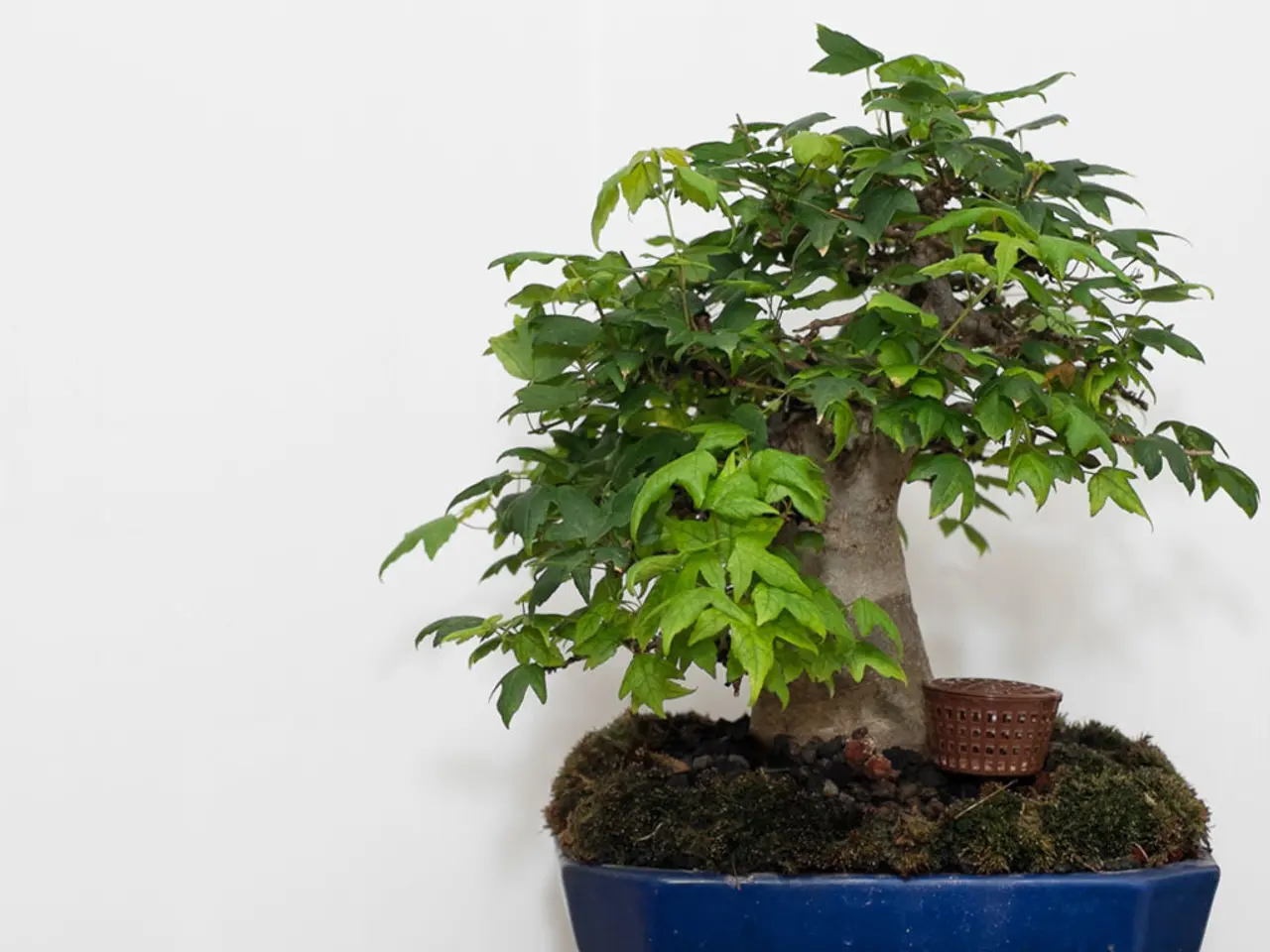Winter Care and Protection Tips for Outdoor Bonsai: Essential Guidelines for Maintenance
In the heart of winter, your bonsai tree will emerge in spring, resilient and rejuvenated, with delicate buds unfurling. This spectacle is a testament to the harmony between human nurture and natural beauty, a harmony secured by the commitment to winter care.
To ensure the survival of your bonsai during the cold months, you need to focus on insulating the root zone, protecting from wind, and maintaining moisture.
One effective method is to bury the bonsai in the ground or "heel-in" the pot with mulch. This involves digging a hole and either placing the bonsai (pot included or removed from its ceramic pot into a plastic one) into the ground, then covering the root ball with mulch, woodchips, or sand without burying it deeper than the soil surface level. Alternatively, you can place the pot on the ground and pile mulch or sand around it up to the pot’s lip for insulation. These methods help maintain a stable temperature around the roots and prevent them from freezing.
However, avoid using straw or hay as mulch, as they may introduce weed seeds and attract mice, which can damage the tree by chewing roots or trunks. It is also advisable to wait until the ground and trees are well frozen before moving trees to overwintering spots, as this reduces the risk of rodent damage.
For species like Cork Oak bonsai that are sensitive to freezing below about -6°C, placing them in a greenhouse or conservatory is recommended over leaving them fully outside. Keep the roots moist during winter by watering when the soil surface dries out, but avoid overwatering. Position trees against buildings or in sheltered spots to protect them from harsh winds, which can exacerbate cold stress.
Species with specific low-temperature tolerance should be monitored carefully and provided with additional indoor protection if necessary, such as tropical bonsai like Dwarf Black Olive, which should be kept above 45–50°F.
Anti-desiccant sprays can be used to lock in moisture, protecting the bonsai from harsh winds and frost. In extreme cold snaps, supplemental heat can be provided using a space heater or hot water bottle wrapped in a towel. Creating a windbreak using burlap, snow fencing, or evergreen boughs can block harsh winds and reduce desiccation.
Signs of winter damage on the bonsai include cracked or split trunks, dead or brittle branches, wilted, discolored, or dropped leaves, and signs of pests, diseases, or root damage. Insulating pots with straw, burlap, or foam helps retain warmth and prevent soil freezing.
Checking on the bonsai every 7-10 days during winter months is recommended to guarantee it's coping with the harsh conditions and make adjustments as needed. Bringing an outdoor bonsai inside temporarily during extremely cold snaps can help protect it, but be cautious of sudden temperature changes and ensure it gets some indirect sunlight.
By following these guidelines, you can help your outdoor bonsai survive freezing winter conditions and emerge in spring, ready to delight you with its resilience and beauty.
Read also:
- Federal Environmental Protection Agency under scrutiny for alleged manipulation of soil sample results following East Palestine catastrophe
- Breathing Methods for Bronchitis: Classifications and Their Functions
- Antibiotic Z-pack for strep throat: Dosage details, potential consequences, and duration of treatment
- Throat discomfort and yawning: Possible reasons and when to seek medical attention





